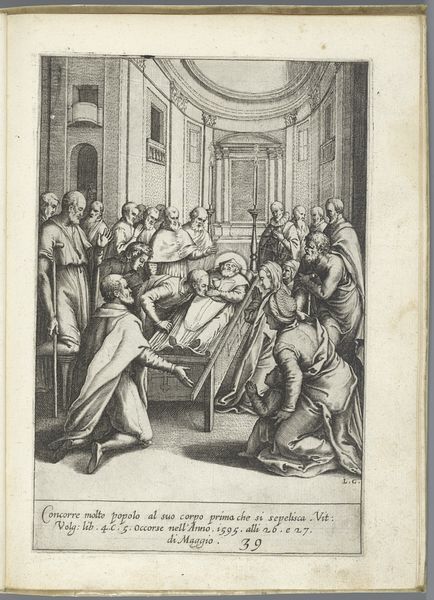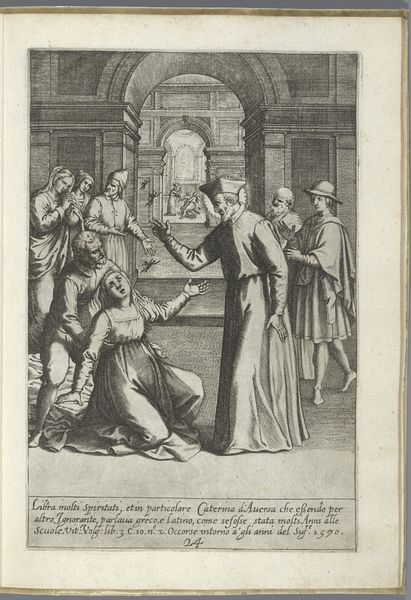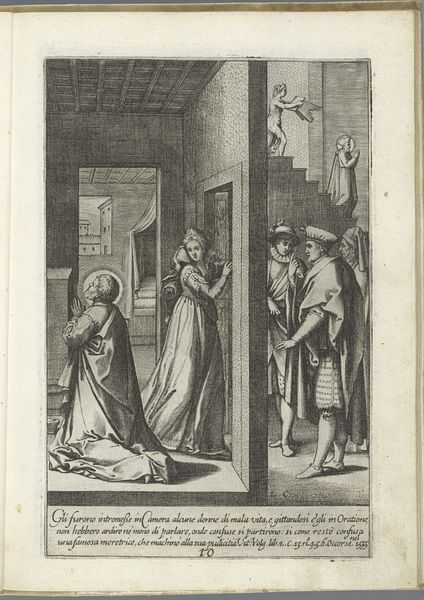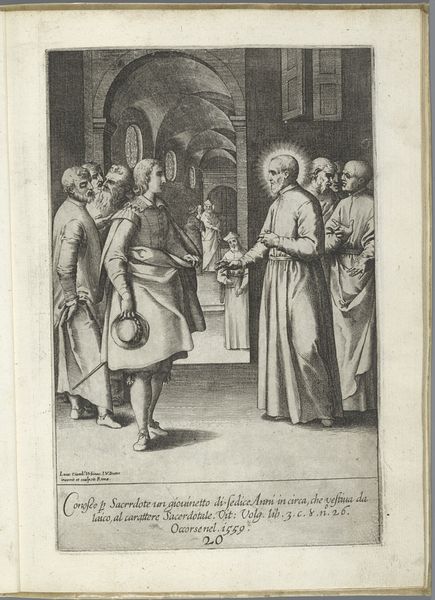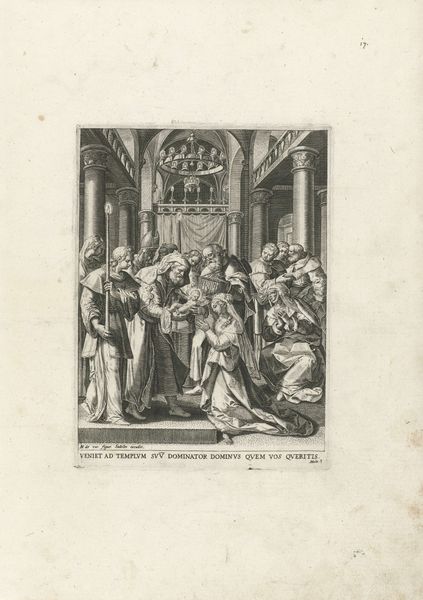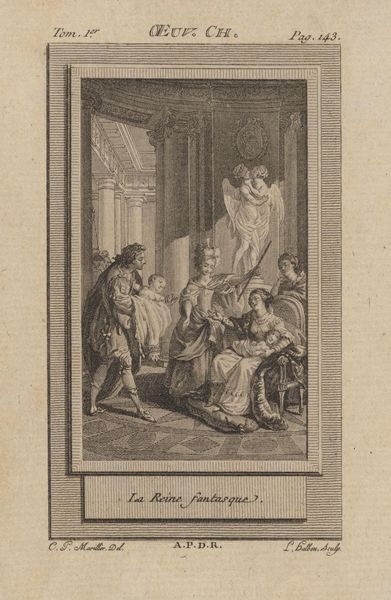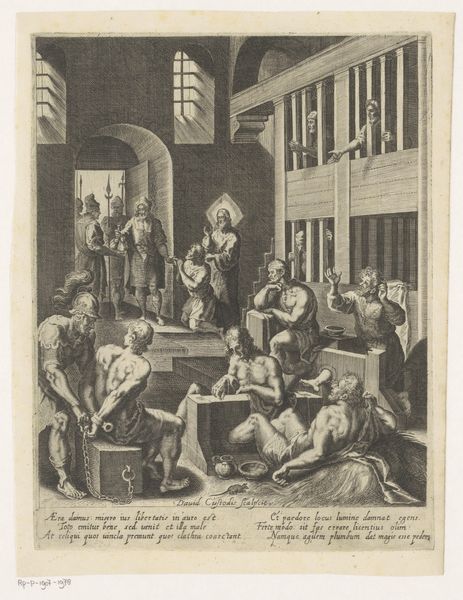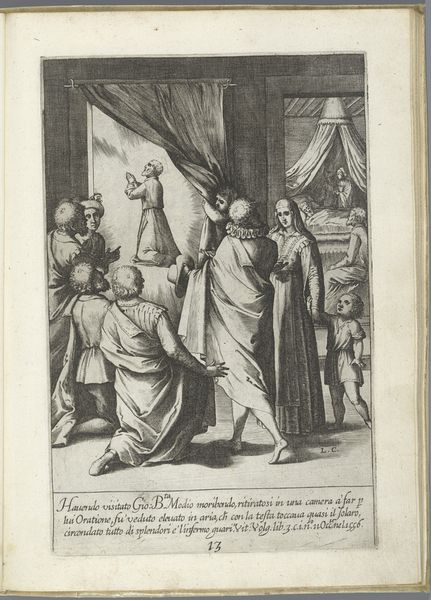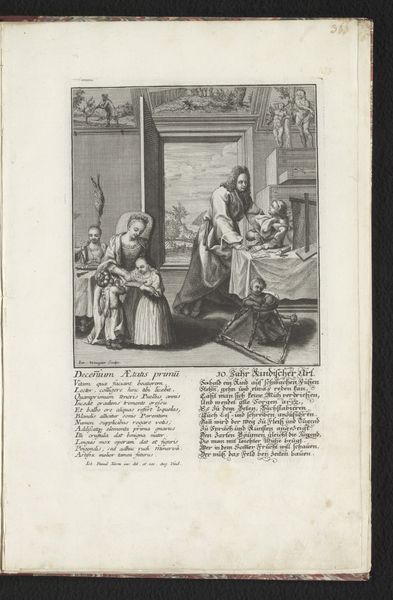
print, engraving
#
baroque
# print
#
pen-ink sketch
#
pen work
#
genre-painting
#
history-painting
#
italian-renaissance
#
engraving
Dimensions: height 228 mm, width 150 mm
Copyright: Rijks Museum: Open Domain
Editor: We’re looking at "Filippo Neri bekeert een joodse familie" created between 1630 and 1641 by Luca Ciamberlano, currently held at the Rijksmuseum. It's an engraving, with very fine line work. The composition strikes me as unusual, almost like a stage set with figures arranged in different planes. How do you interpret the stark divisions within the artwork? Curator: Indeed. Notice how the artist uses line and form to create a distinct spatial separation. The division isn’t merely representational; it serves as a crucial compositional device. The carefully balanced areas of light and shadow, and the precise linear perspective all contribute to a structured, almost architectural framework. Editor: I see what you mean. It’s not just about depicting a scene, but about how the different spaces interact visually. Curator: Precisely. Consider the lines that define the figures’ drapery and their arrangement in relation to each other. It builds up a complex interplay between masses, creating a measured cadence across the entire piece. It’s almost as if the content itself—the conversion—is secondary to the formal problem of organizing space and volume through line. Editor: So, are you suggesting that the artist's focus was less on narrative and more on pure aesthetic form? Curator: In this case, I believe a formalist interpretation opens valuable pathways for decoding Ciamberlano's choices. It's by examining the intrinsic visual properties of the work, the geometric framework and precise articulation, that we start to perceive how meaning is generated through purely formal elements. Editor: This close observation, detaching the image from history, teaches me new things. Thank you for providing this viewpoint! Curator: My pleasure! Analyzing artwork based on its pure aesthetic form reveals other dimensions, and this can lead to profound understanding.
Comments
No comments
Be the first to comment and join the conversation on the ultimate creative platform.
